Affiliate links on Android Authority may earn us a commission. Learn more.
How to install and use Dolphin Emulator
Dolphin Emulator is a GameCube and Nintendo Wii emulator for PC, Mac, and Android. It’s one of the most popular emulators for those consoles. Even if you own a new Nintendo Switch and enjoy the company’s latest titles, you might enjoy retro games. Learn how to download, install, and use Dolphin Emulator on your Windows PC, Mac, or Android phone below.
QUICK ANSWER
To install Dolphin Emulator on a PC or Mac, head to the official website's download page and download the most recent version on your platform. Install it like you would any other app, and then you can proceed with the setup process. For Android phones, download the app from the Google Play Store like any other app.
JUMP TO KEY SECTIONS
Download and install Dolphin Emulator on Windows
There are two methods to install Dolphin Emulator on a Windows PC. The first is the traditional method, where you install it as a program on your computer and open it like any app. The other method contains the app in a folder that you place where you want and access as you choose. We’ll do both here.
Download the beta version (recommended)
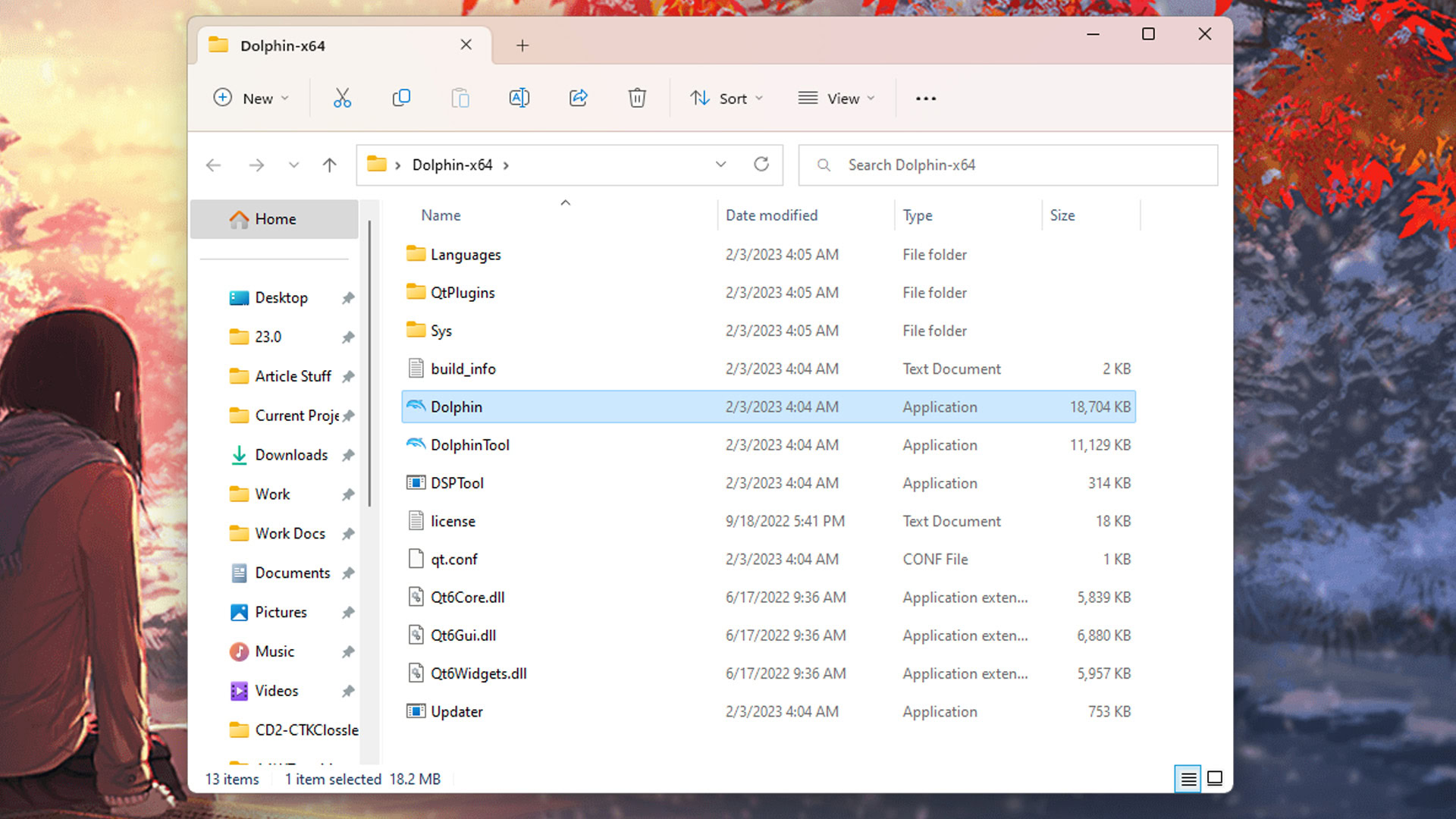
The beta version gets updated more consistently than the legacy version. Thus, we recommend this one since it is in active development. This tutorial is for Windows 11, and it’s slightly different from previous operating systems.
- You’ll need to download and install 7-Zip. We recommend the 64-bit Windows x64 version at the top of the download list. Dolphin Emulator’s betas come in 7z archive files, which 7-Zip handles.
- Head to Dolphin Emulator’s download page.
- Find and select the most recent beta version. It appears at the top of the list.
- Hit the Windows x64 button to download.
- Once done, go to your Downloads folder and find your download.
- Right-click the download and tap Show More Options.
- Select 7-Zip from the context menu, and then select Extract Here.
- Once done, you’ll have a folder with many Dolphin Emulator files.
- It’s a portable application, so there is no installation. Double-click Dolphin, and the emulator opens.
Pro tip: Since it is a portable app, you can move the folder wherever you want for easier access. I usually stash it on the desktop, but you can even pop it onto a flash drive if you want to.
Download and install Dolphin Emulator on Mac

This is very similar to the beta version of Windows, where it’s a portable application, and you just need to open it. Again, we recommend the beta version instead of the legacy version since it is in active development. Here are the steps.
- Head to Dolphin’s official website.
- Download the most recent beta version. Select the macOS (ARM/Intel Universal) button.
- Once downloaded, navigate to your downloads folder and find the Dolphin Emulator DMG.
- Double-click on the DMG to open it. Double-click on Dolphin to open the app.
- Note: It may throw a warning about it being an app downloaded from the Internet. Just hit Open to continue.
Set up a game directory (both PC and Mac)
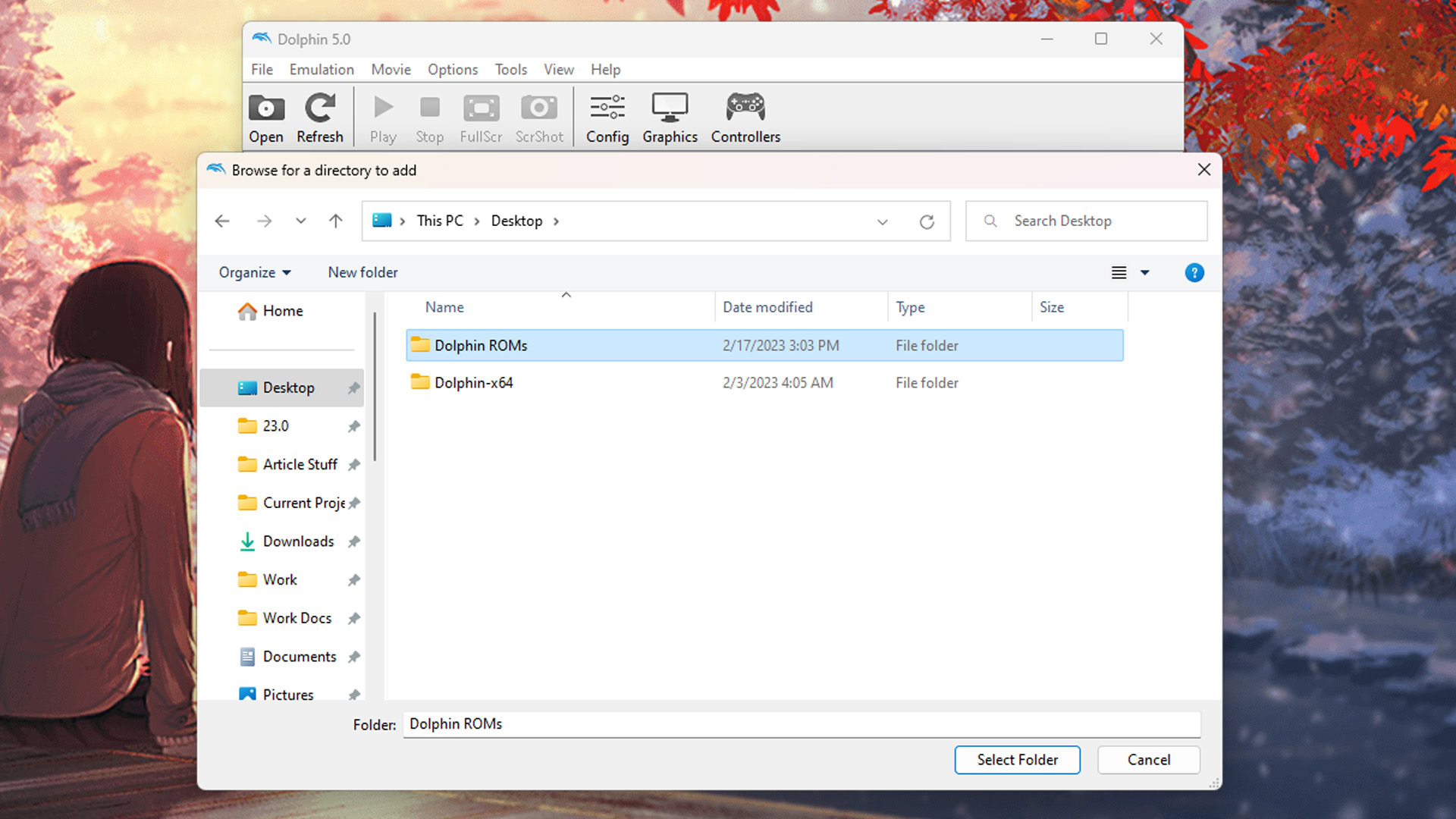
Regardless of your method, you’ll want to create a folder to stash your game ROMs. This is a super easy process but a very necessary one. Otherwise, your Downloads folder is going to get crowded after a while.
- Go to where you want to create your ROM folder. I chose the desktop, but many folks use their Documents folder.
- Right-click on an empty space, select New, and then select Folder.
- Rename your folder whatever you want. I call mine Dolphin ROMs.
- Open Dolphin Emulator and double-click where the window tells you to.
- Navigate to your Dolphin ROMs folder and select it.
- Dolphin will automatically add any GameCube or Nintendo Wii ROMs it detects once you add them.
Pro-tip: I recommend doing this process regardless of your platform — PC or Mac. The screenshot above was taken on Windows 11, but I also repeated this method when testing on my Macbook Air.
Once you’re done, you need to add some ROMs. After that, you can set up your emulator and start playing.
How to play a game in Dolphin Emulator
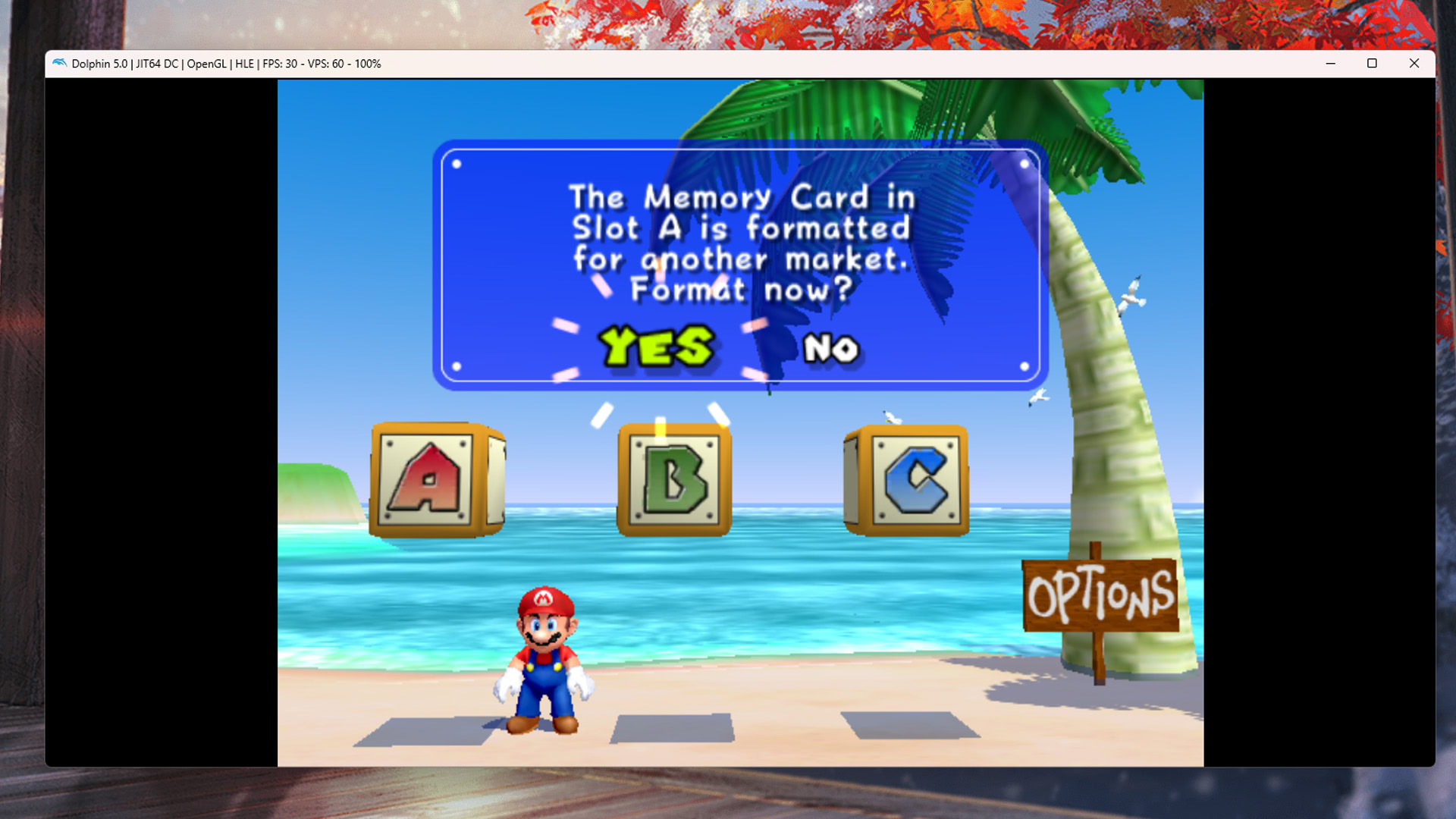
You’ll need a ROM before you can start, and unfortunately, that’s outside the scope of this guide. Legally, you can only play ROMs that you have ripped from your own physical collection. We’ll leave it at that.
However, once you obtain a ROM, put it in your ROM folder, and load up the emulator, things get pretty easy.
- Place your ROM in your ROM folder and open Dolphin Emulator.
- The emulator should automatically detect the new game.
- Tap on the game, then tap the Play button on the top toolbar.
- The game should open and play.
Of course, some base configurations work fine out of the box, but you may want to configure it further before playing. We’ll show you how to do that next.
Set up and use Dolphin Emulator on Windows and Mac
Luckily, Dolphin Emulator comes pretty well set up out of the box. It should play most games at good frame rates, with only minor adjustments needed depending on your computer. For example, the GameCube and Nintendo Wii controls come pre-mapped to your keyboard. You just have to learn which buttons do what. There is minimal setup needed to pop in and play, but we’ll still go over some common items for customization purposes.
While there may be some small changes between platforms, setup on Windows and macOS is nearly identical, and the same instructions should work 99% of the time between them.
How to configure a controller on Dolphin Emulator
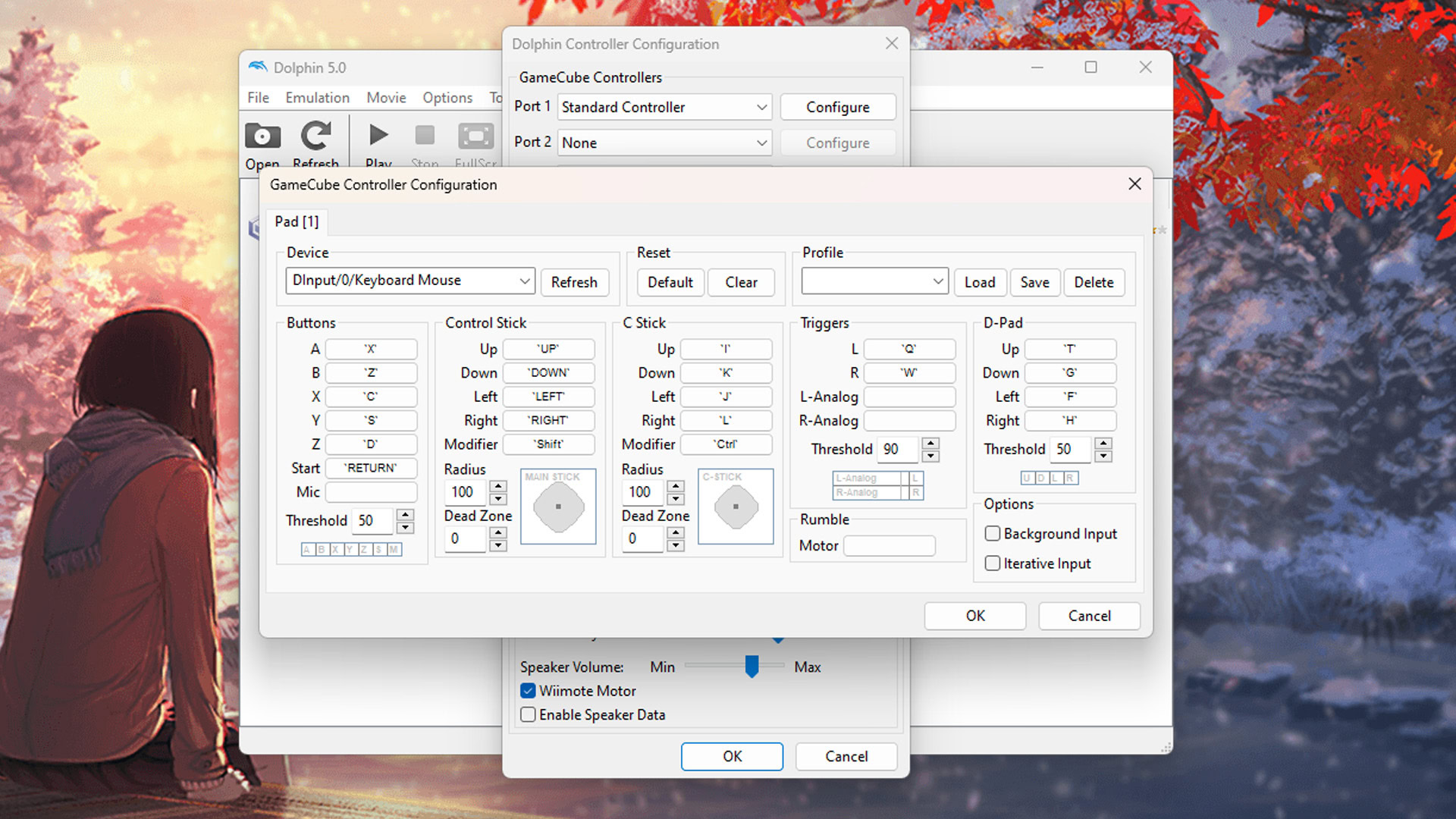
Configuring your controls not only allows you to remap your keyboard to be more comfortable but also helps you learn what each button does. We very heavily recommend a wired GameCube controller along with a USB GameCube adapter. The three joystick configuration for the GameCube controller doesn’t translate well to mouse and keyboard. In any case, here’s how to configure everything.
- Open Dolphin Emulator.
- Tap the Controller icon along the top toolbar.
- There are two main sections here. The top section is for GameCube controllers, and the middle section is for the Nintendo Wii controller.
- Select Configure for the controller you wish to customize.
- On the next screen is every button a GameCube or Nintendo Wii controller is capable of pressing, along with all three joysticks. Remap the buttons and joysticks to your heart’s content.
- Optionally — If you want multiple controller profiles, locate the Profile box on the right side of the window, type in a profile name, and hit Save. You can save and load multiple profiles this way.
- Once done, hit OK when you’re finished.
- Note — The emulator will automatically switch between controllers depending on which game you’re playing.
The controller configuration screen definitely looks intimidating at first. We recommend taking your time and looking through everything. Don’t be afraid to tinker and mess around. You can always hit the Default button to restore everything to its original settings.
How to configure graphics settings on Dolphin Emulator
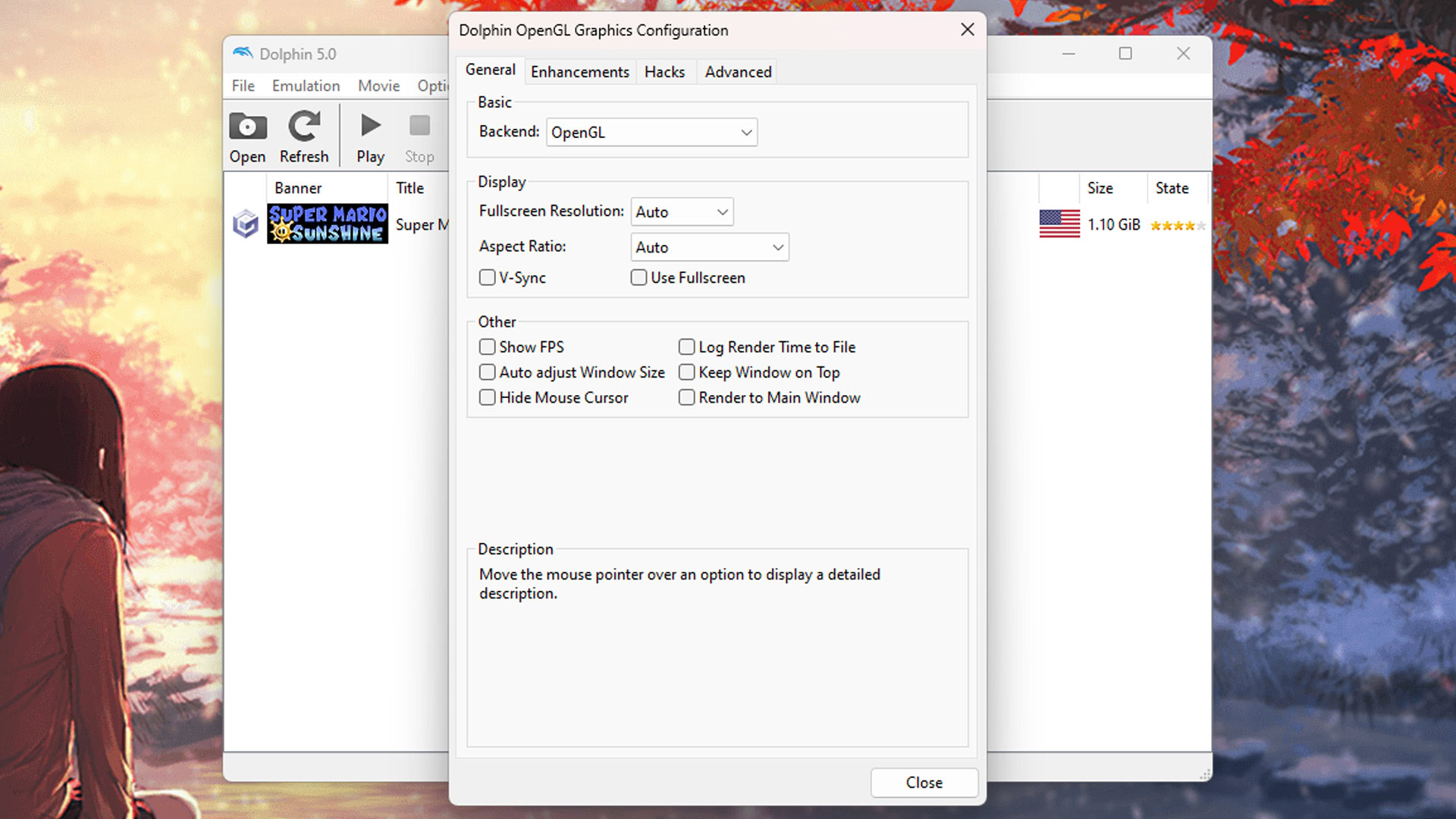
Graphics settings are set pretty well out of the box, and my PC and Mac had no problems running Super Mario Sunshine at max frames. However, your system may need some adjustments to get the best possible performance, so we’ll show you how to do that.
Standard graphics settings
- Open Dolphin Emulator.
- Select the Graphics option along the top toolbar.
- A window will open with four tabs, General, Enhancements, Hacks, and Advanced. Each tab has several graphics settings you can change.
- We usually list each change and what they do. However, Dolphin Emulator has tooltips that tell you what each option does if you mouse over it.
- Adjust the settings as necessary and hit Close when you’re done.
Pro-tip: One of the changes we recommend is increasing the Internal Resolution under the Enhancements tab if your computer can handle it. The higher resolution not only looks better but gives you a larger screen to play with.
For the most part, it seems Dolphin is configured for efficiency out of the gate. Many graphical settings, like anti-aliasing, anisotropic filtering, etc., are at their lowest possible settings or turned off entirely. There doesn’t seem to be much to do if your FPS is too low, but there’s plenty to do if your machine can handle a higher workload.
Other configuration settings
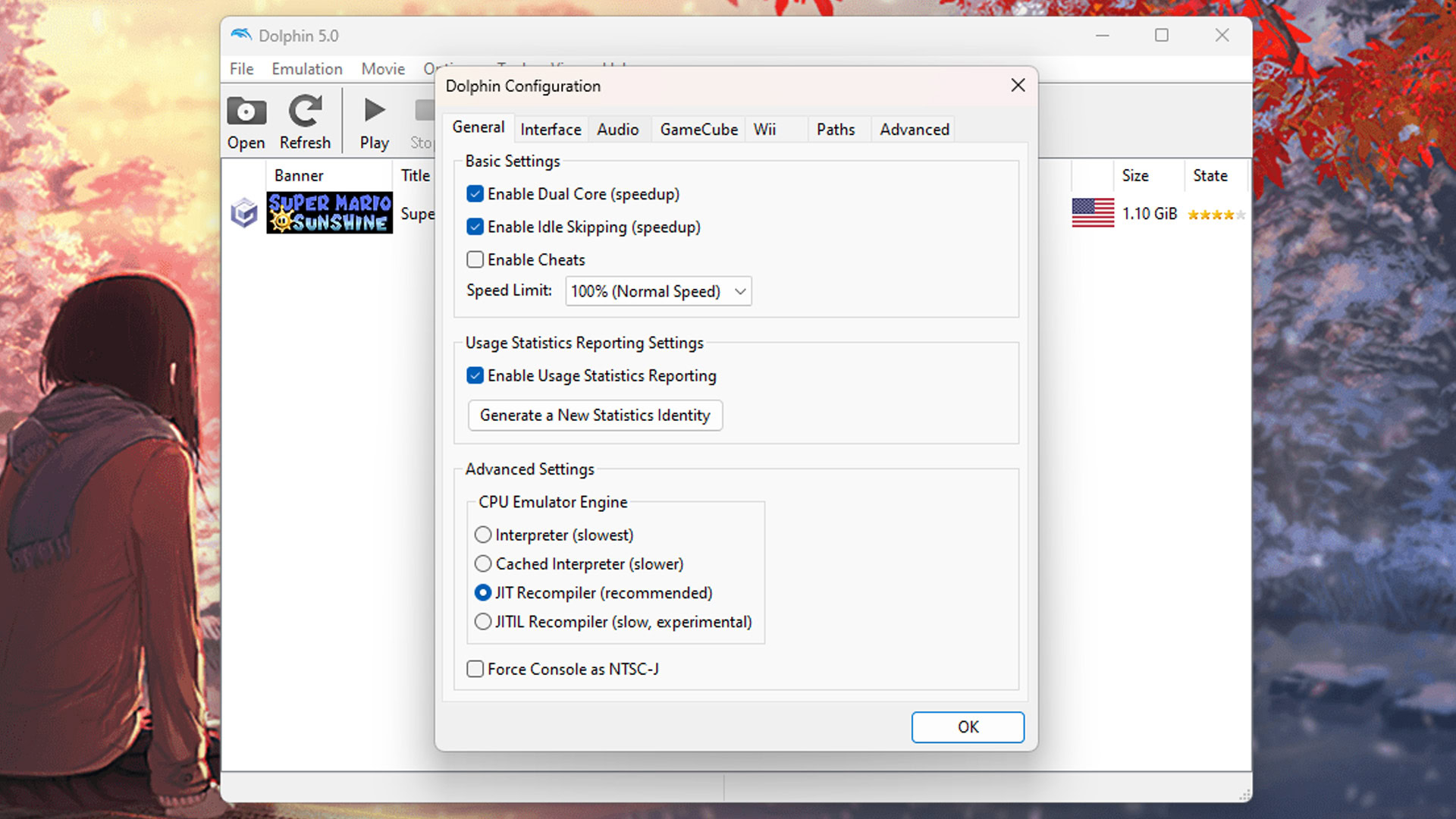
Dolphin Emulator has some additional configuration settings you can access by tapping Options at the top of the window and then Configure. This houses some general configuration controls. You shouldn’t need to mess with this all that much, but it may help with troubleshooting if your emulator is bugging out. Below, we’ll talk about each tab in the Configure menu.
- General: These general configurations enable things like dual core, idle skipping, and usage statistics reporting. You shouldn’t ever need to touch anything in here, but you can if you want to.
- Interface: This gives you a few minor customizations to the emulator UI. For example, you can tick a box here that asks you to confirm you’re exiting the app before it lets you exit, preventing the loss of any saved data.
- Audio: As the name implies, this part of the menu deals with audio settings. You only need to change these options if the audio in your game is messing up.
- GameCube and Wii: Both of these tabs have console-specific options, like aspect ratio, memory cards, and other such things.
- Paths: This lets you add, remove, or change paths to your ROM folder. You can also define paths to Default ISO, DVD Root, Apploader, and Wii NAND Root if you want to.
- Advanced: The only option here is the ability to “overclock” your emulator. This increases framerates but also puts a much higher strain on your CPU. You can tinker with it if you want, but if your computer is already running games at the maximum framerate, we wouldn’t bother.
That’s about it for configuration. As we said earlier, the emulator comes set up pretty well out of the box, so aside from controller configurations and maybe increasing the graphics settings, there isn’t much to do to play.
Download and install Dolphin Emulator on Android

Modern smartphones provide a powerful platform for running retro games. There are a slew of emulators for Android, but Dolphin is one of the best emulators around for Nintendo fans. Installing Dolphin Emulator on your phone is exceptionally easy.
- Navigate to Dolphin Emulator on Google Play.
- Install it like any other app.
Optionally, you can download the third-party APK from Dolphin Emulator’s official website and follow our tutorial for installing third-party apps if you want to go that route.
We recommend using the Google Play version since it gets regular updates anyway. Unlike many emulators, the latest beta version is automatically added to Google Play, so you don’t have to manually update ever again.
Create a ROM directory for Dolphin Emulator
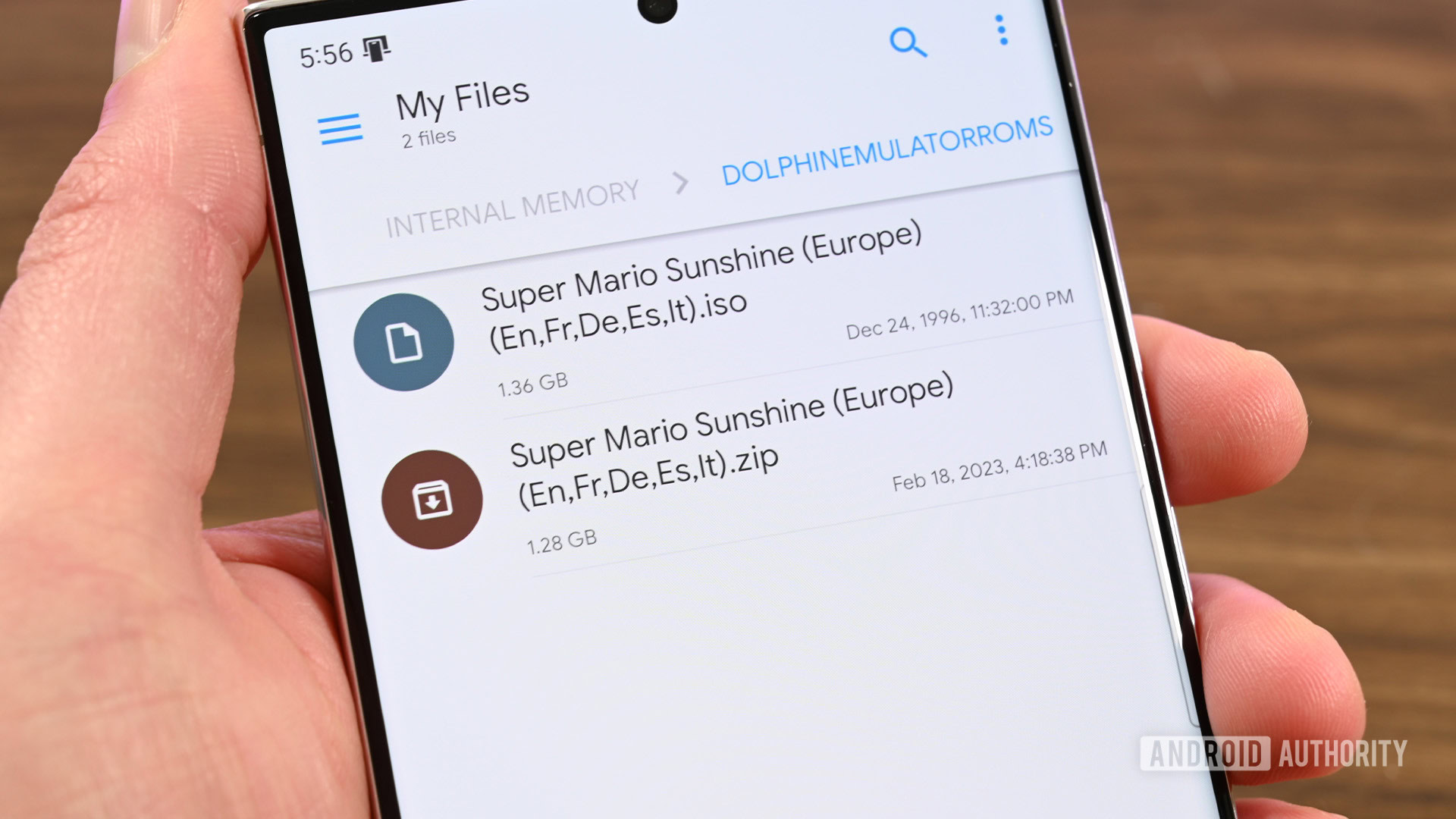
Much like the PC version, we recommend you create a folder on your phone to stash your ROMs. It makes it easier for the emulator to find new games, and it also makes it vastly easier to back up if you ever need to switch your phone. For this tutorial, we use Solid Explorer (Google Play), but you can use any good file browser app.
- Open your file browser app and navigate to your internal storage.
- Use your file browser to create a new folder. Rename it to whatever you want. I just named mine DolphinEmulatorROMs.
- From here, go to your Downloads folder and move any games to your new ROM folder.
- Dolphin Emulator can’t read ZIP files, so you must extract any games you download before they appear in the emulator.
Pro-tip: When upgrade your phone someday, use an app like Autosync (Google Play) or Google Drive to back up the folder. You can download the folder on your new phone, and it’ll be there when you need it.
This part isn’t 100% necessary, but it is highly recommended. Otherwise, your emulator is reading game ROMs out of your Downloads folder, where you can accidentally delete it if you’re not paying attention. It’s always good to get permanent files out of the Downloads folder.
Set up Dolphin Emulator on Android
Dolphin Emulator on Android is a lot like its PC and Mac variant. It’s mostly set up to go out of the box, and all you really need to do is minor tweaks to get it set up for you. Let’s go down through some common configurations to get you all set up and ready to go.
Configure your Dolphin Emulator controls
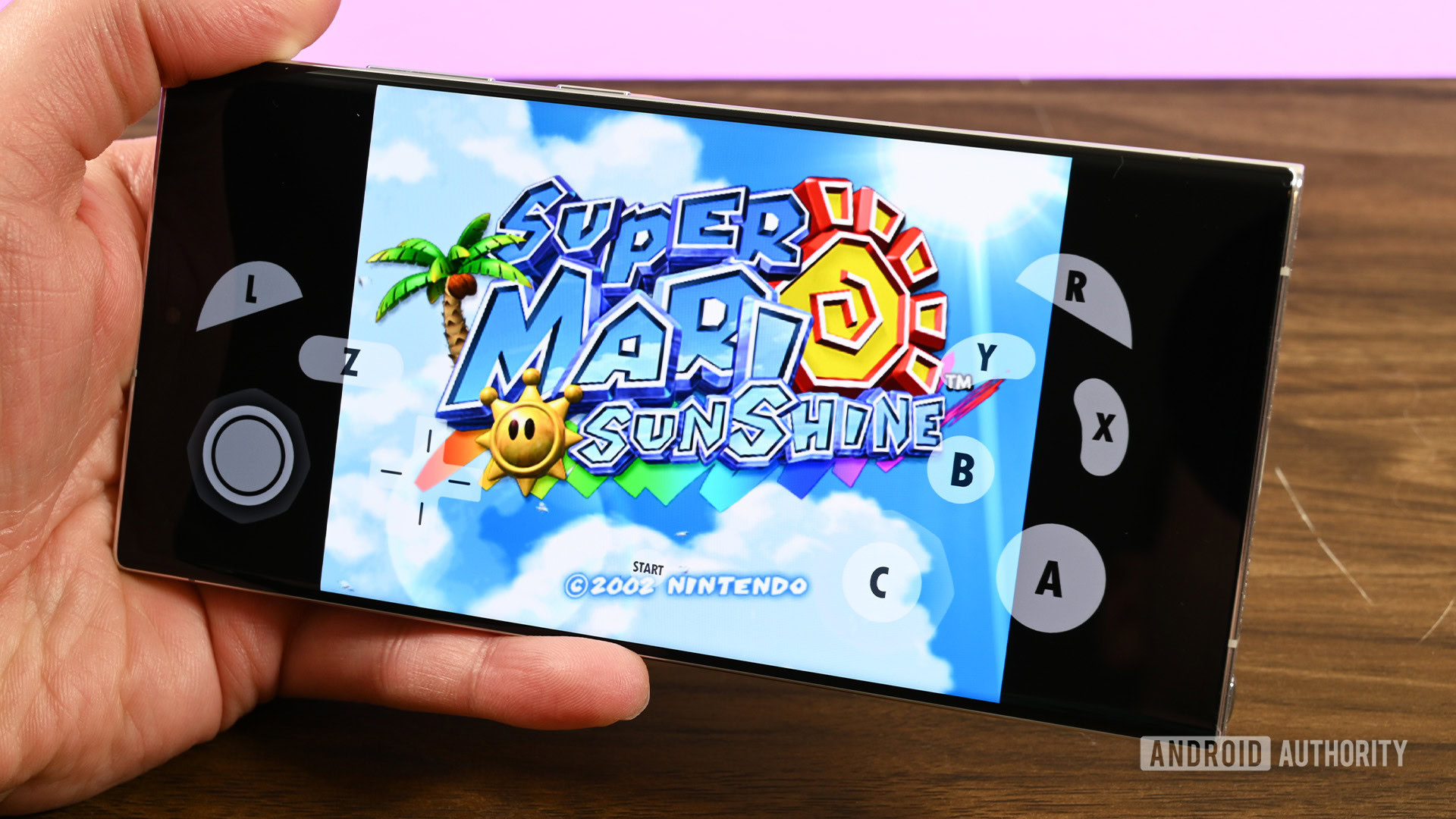
You have two options here. You can use on-screen controls or a hardware controller. We’ll show you how to configure both. For this tutorial, we used a Moga XP5-X Plus Bluetooth controller.
Customize on-screen controls
- Open Dolphin Emulator and then open whichever game you want.
- Once the game is open, open the Dolphin Emulator menu by sliding in from the side of the screen and hitting your back button.
- From here, select Overlay Controls.
- Move your controls: Click Edit Layout, then move the buttons around until they’re where you want. Click Done when you’re done.
- Resize controls and change opacity: Tap Adjust Controls , where you’ll find size and opacity sliders.
- To hide your on-screen controls: Tap Toggle Controls and tap the Toggle All button at the bottom of the window. This is useful for hiding the controls when using a controller.
Tip: You have to do this manually for every game, and you’ll need to manually toggle the controls back on if you don’t have your controller with you on any given day.
You can find additional keyboard controls by hitting the Cogwheel on the Dolphin Emulator home screen and selecting GameCube Input or Wii Input. However, that’s more for hardware controller stuff than on-screen controls.
Configure hardware controllers in Dolphin Emulator
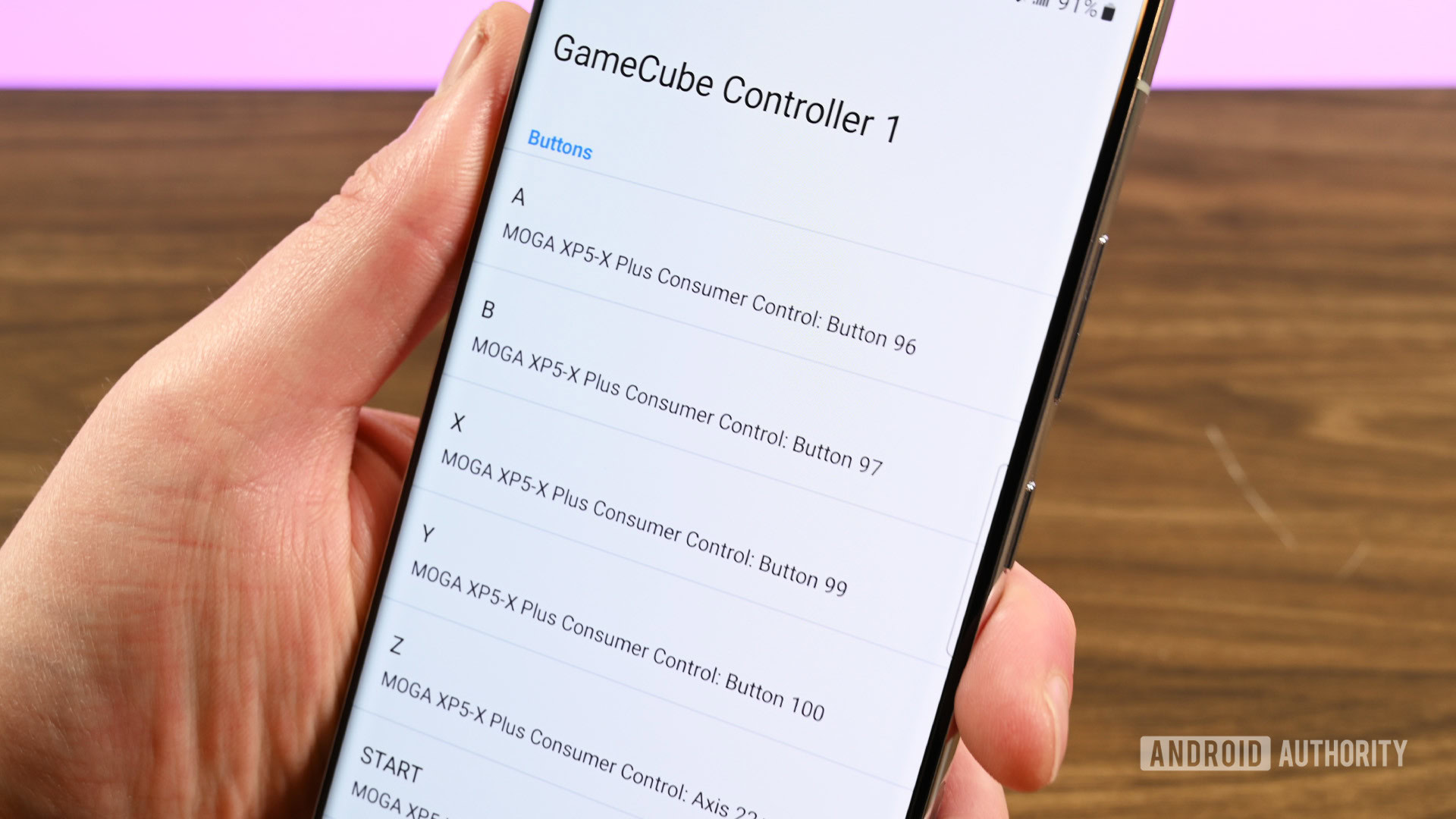
- Turn your controller on and connect it to your phone.
- Open Dolphin Emulator and click the Cogwheel icon at the top.
- Go to GameCube Input.
- Select GameCube Controller 1 and then tap Emulated.
- You’ll see a list of all of the GameCube inputs. Tap each button to map it to your controller. Unfortunately, this has to be done manually.
- Once done, hit back.
- Select Wii Input and repeat the previous steps, but for the Wii controller.
- Once done, exit the menu, open your game, and enjoy.
Pro-tip: To hide your on-screen controls, open any game and open the menu. Go to Overlay Controls, then Toggle Controls, and tap the Toggle All button to hide all of the buttons. There are also additional options for setting up a GameCube adapter or Dolphin Bar. They are pretty straightforward but do require hardware purchases first.
Configure graphics for Dolphin Emulator on Android
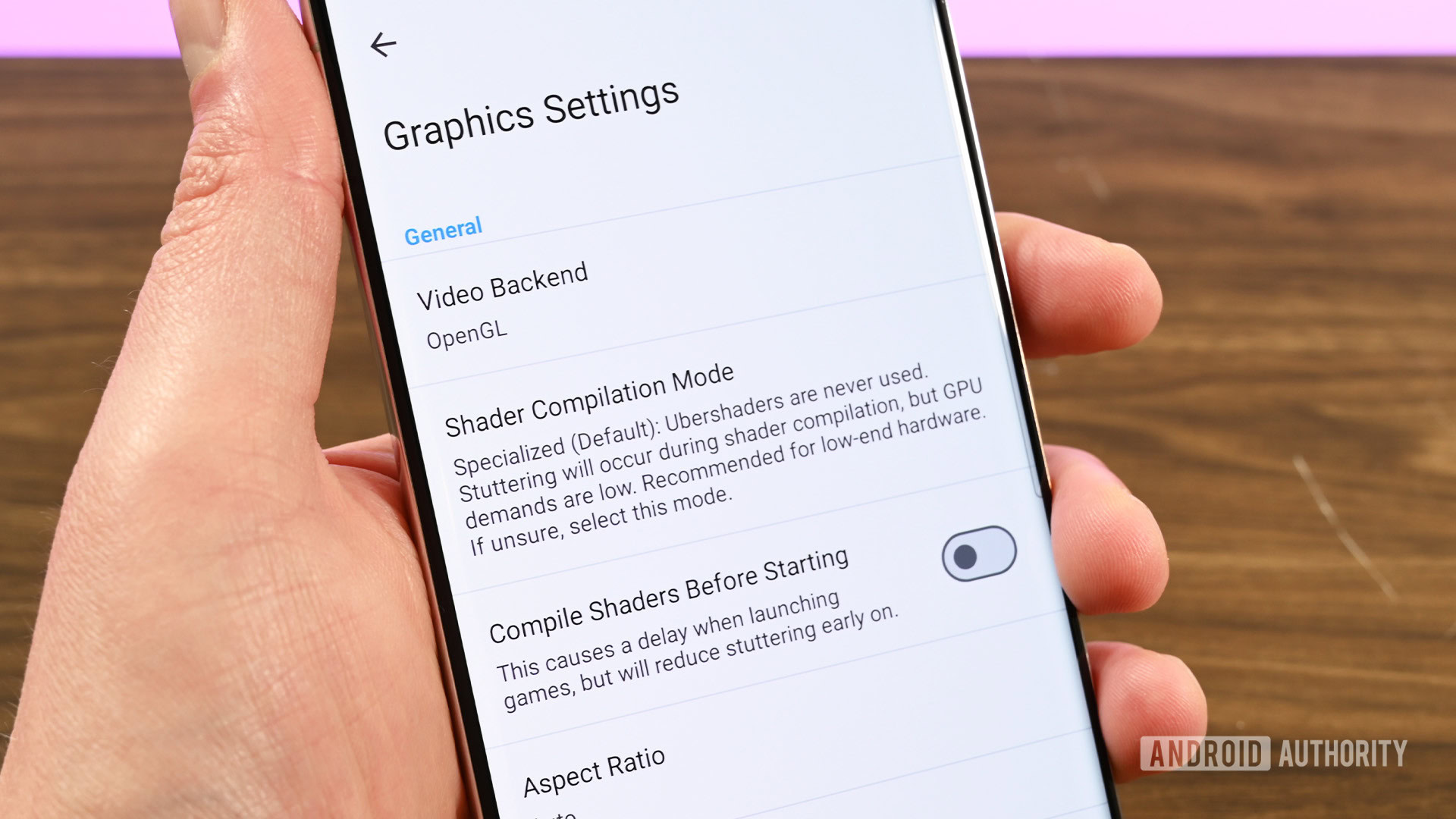
You shouldn’t need to configure Dolphin Emulator on your Android phone. The default settings work on the vast majority of modern Android devices. However, if you do, here’s where you can find them.
- Open Dolphin Emulator and hit the Cogwheel.
- Tap Graphics Settings.
- You’ll find several options here. If you’re having performance issues, the only one you can really change is Shader Compilation Mode, which causes the game to stutter but does increase overall frame rates. The developers only recommend using it on very low-end hardware.
- Enhancements: Includes various processing enhancements to ensure smoother gameplay and better graphics. In particular, Internal Resolution is a nice one to increase if your phone can handle it.
- Hacks: Includes options to increase performance or graphical quality. Read through each option and check or uncheck the option if needed.
- Statistics: Lets you show things like FPS, VPS, and speed so you can see if your changes are doing anything. None of these options affect performance.
- Advanced: This menu holds options for enabling texture packs, mods, and other random things. Some of these options affect performance as well.
There are a lot of really cool things in there, and each setting has an explanation of what it does. Thus, poke around in there if you want to have some fun or if you need to turn the settings up or down to match your tastes or hardware. Again though, you don’t need a high-end gaming phone to use Dolphin emulator.
Other configuration settings

There are a few other spots of note in the settings that you may want to know about. You can reach this part of the menu by opening Dolphin, tapping the Cogwheel, and then selecting the Config option.
- General: Some general settings that you shouldn’t have to mess with. This is where you can enable save states if you have to, but the developer doesn’t recommend it.
- Interface: Some UI settings let you tweak when and how you receive information. This is where you can access the app theme if you want to.
- Audio: This is where the audio settings are, and we don’t recommend messing with them unless your audio stutters. In that case, enable the Audio Stretching setting.
- Paths: This is where you can define where you want all of your files to go or come from. This is also very helpful for knowing which folders to back up if you switch devices.
- GameCube: Some GameCube-specific settings like memory card settings.
- Wii: Some Nintendo Wii-specific things like inserting a virtual SD card, region, and other things you shouldn’t have to adjust often.
- Advanced: Allows you to tick some settings required for some games, like MMU. You can also overclock the emulator here, but we don’t recommend that for battery life and thermal reasons.
- Log: This lets you determine which logs are written and where they are written.
- Debug: Some debugging settings that no average user should ever need to touch or mess with.
- User Data: This lets you import or export user data to prevent loss when deleting the app or switching phones. We highly recommend using this to back up your data periodically in case your phone dies.
There are some other configurations, but like most of the emulator, they aren’t things you should need to touch unless something very odd is happening. We also recommend checking out the official subreddit if you run into issues.
FAQ
In a word, probably. Dolphin Emulator doesn’t have a demanding minimum specs requirement. A quad-core CPU with a high clock speed is recommended alongside at least 2GB of RAM and a GPU that supports DirectX 11.1 or OpenGL 4.4. The emulator also requires a 64-bit OS.
No. Emulator and ROM use are 100% legal. However, they exist in a moral gray area since you are, in essence, pirating old video games. There’s still a lot of legal debate about this topic, but you won’t go to jail for using an emulator.